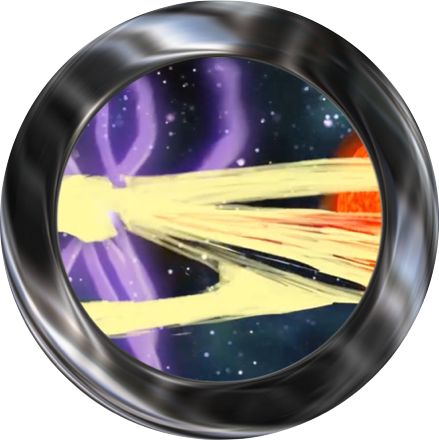Fermi Friday - Feb 23, 2018

Art of the Sky: Pulsar science inspires art!
The Fermi Fridays: Art of the Sky series will include imaginative pieces created by art students, scientists, and bakers. We hope that you're inspired by the gamma-ray Universe as much as we are.
Fermi's observations of extreme astrophysical phenomena has led to important scientific discoveries and inspired creative ways to imagine those objects. Pulsars evoke a powerful image of star that is as massive as our Sun, fitting inside a large city, spinning tens to thousands of times per second. Pulsars have extreme magnetic fields powering a bright lighthouse-like beam that sweeps past our view making them appear to blink.
The Fermi team at NASA's Goddard Space Flight Center has been collaborating with the Advanced 2D Animation class at the Maryland Institute College of Art (MICA). Each February, Fermi scientists visit MICA and present ideas about recent scientific results. The MICA students choose topics and find ways to imagine the Universe in creative ways completely different than scientists. Throughout their semester, the art students consult Fermi scientists, and finally produce short animations with a viewing event at Goddard. This collaboration has been ongoing since 2014, producing animations on nearly every Fermi science topic.
Pulsars
Created by: Amber Klocek & Megan Rivas
Pulsars rotate at different rates producing very regular blinking lighthouses in the sky. If you imagine that blinking as sound, you would hear them singing.
Black Widow Pulsar
Created by: Tristan DiMaria, Malcolm Jones, Shoshanah Tobesman, & Elena Dreyer
Many gamma-ray pulsars live in binary systems, where they get spun up by capturing material from a companion star. Black Widow pulsars are a particularly hungry variety.
Pulsar Cake!
Goddard also is the home of a group of Fermi scientists who are amateur cake bakers and decorators. We bake Fermi cakes for a variety of occasions including launch anniversaries, Ph.D. dissertation defenses, an annual Science as Food competition, and even a few weddings. One of our earliest cakes depicted the components of a pulsar.

Before (left) and after (right) views of the Fermi Gamma-ray Pulsar Cake. The Pulsar Cake includes the cracking crust of the neutron star (red sugar candy), the magnetic field lines (white
pulled sugar), the jet of radio emission (green cone), and the source of gamma-rays (magenta cotton candy).
Cake Credit: David Green, Sylvia Zhu, Judith Racusin
Photo Credit: Jay Friedlander
Please check back on the 4th Friday of every month in 2018 for animations, cakes, and much more!


